Summer Gardening – 10 Plants That Beat Summer Heat and How to Care for Them
Dotti Franz, Master Gardener2023-09-13T02:37:50-06:00The magic trick to successful summer gardening in the South is to focus on plants that love the heat! If you select low-maintenance, adaptable plants, your summer garden can maintain its beauty despite consecutive days of 100-plus-degree temperatures. This article covers 10 plants to consider and how to care for them.
Easy Tips to Care for Your Summer Garden
It is necessary to water your summer garden – but never overwater! You can check before watering by sticking your finger (or a pencil) four inches down into the soil. No water is necessary if your fingertip or pencil tip comes up damp. A moisture meter is a valuable tool for gardeners because it measures how wet or dry the soil is. Once you determine if your plants are thirsty, irrigate deeply at ground level. Watering is best done in the morning to allow moisture to soak into the soil before it evaporates in the afternoon sun and heat.
Plants can fool you by wilting in harsh sunlight, even when they have sufficient water. Some plants droop on hot days because moisture evaporates from the leaves faster than the roots can absorb it. Wilting for short periods will not harm your plants. However, over-watering can cause roots to rot. Nearly all plants require protection during severe heat, except cacti or agave. Provide your summer garden with a thick level of mulch to keep the soil temperature cooler and retain moisture.
Additionally, most plants benefit from some shade in the afternoon. Investing in a shade cloth can be helpful unless your summer garden is sheltered by surrounding shrubs or trees. To further protect your plants, pause all pruning and fertilizing until the heat wave has passed.
Ten Show-stopping Plants That Flourish in a Summer Garden
Victoria Blue Salvia (Salvia farinacea ‘Victoria Blue’)
The deep violet-blue flowering spikes of Victoria Blue Salvia are breathtaking and provide a sense of coolness to the summer garden. This drought-tolerant perennial is easy to grow, low maintenance, and delivers vertical interest.
It thrives in full sun or partial shade, needing at least two to four hours of direct sunlight daily. It is best to provide shade and regular water for continuous flowering during extreme heat. If you observe dry, cracking soil around the plant or wilting and shedding of the leaves, this is a sign of thirst. Victoria Blue Salvia grows 18-24 inches tall and spreads 12-15 inches in the garden.
Reminiscent of Lavender, the flowers attract numerous beneficial pollinators, and the seeds are edible to birds and wildlife. Native to Mexico and Texas, this salvia is considered perennial within USDA hardiness zones 8A-10B. Salvia tolerates poor soil but prefers a well-draining combination of clay, loam, and sand with a slightly alkaline pH. Victoria Blue Salvia blends beautifully with other summer garden plants and provides captivating visual appeal to any landscape.
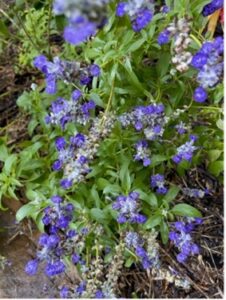
Firecracker Fern (Russelia equisetiformis)
Firecracker Fern bursts into bloom with fountain-like sprays of dazzling, scarlet-red, tubular flowers. Not a true fern, this plant is a perennial shrub hardy within USDA zones 9A-11B. It grows in a graceful, wispy form to a height and width of 3-5 feet. Firecracker Fern is spectacular for summer gardening, flowing over a balcony or hanging basket, trained to grow on a trellis, or nestled among other flowering perennials. Although it is widely available in hues of coral or scarlet, garden centers now offer newer cultivars that bloom in ivory, pink, yellow or salmon.
The Firecracker Fern is listed as a ‘Texas A&M Outstanding Coastal Plant’ due to its remarkable resistance to heat, drought, and salt. Native to Mexico and Guatemala, this shrub flowers best in areas receiving at least a half-day of sunlight. It is important to know that all parts of the plant are toxic to humans and animals if ingested. The Firecracker Fern attracts hummingbirds and makes a dazzling selection for fiery, hot summer gardens.
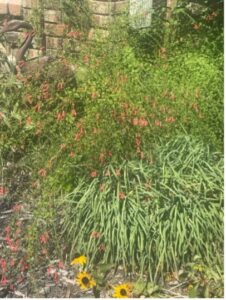
Zahara Zinnia (Zinnia marylandica)
Zahara Zinnias provide beauty and long-lasting color without blinking through the heat and drought of summer. This zinnia grows 18-inches tall and wide. Its elegantly mounding, well-branched form helps support the abundant, daisy-like flowers it produces. Zahara Zinnia is an annual bedding plant for summer gardens with single or double blooms.
It comes in pure, bright hues, including crisp linen white, brilliant yellow, scarlet-red, vivid coral, soft pink, and deep rose. The flower colors will not fade or bleach when exposed to prolonged harsh sunlight.
Zahara Zinnias require little maintenance and fill in quickly to create a rainbow-color carpet. They grow best as annuals in USDA hardiness zones 3-11 and can thrive indoors or out. Introduced in 2009, the Zahara is an exceptional variety due to its natural resilience to disease, larger flower size, mounded form, and the ability to attract myriad butterflies and bees. Originally from Mexico, zinnia has been hybridized and refined to become one of the most popular annuals in American summer gardens.
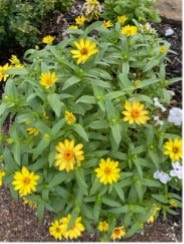
Black-Eyed Susan (Rudbeckia hirta)
Vibrant and cheerful, the Black-Eyed Susan plant can charm any sunny area with its profusion of golden-yellow, daisy-like flowers. Each brilliant flower has a contrasting mahogany “eye” in its center. Native to the eastern United States, this low-maintenance plant is hardy within USDA zones 3A-9B. Black-Eyed Susan reaches a height and spread of 2-3 feet and can multiply to create a blanket of gold in the summer garden. The flowers attract pollinators, while the seeds nourish beautiful songbirds. Extremely heat tolerant, it can thrive under six or more hours of intense sunlight daily. Flowering from late June until August, this versatile perennial isn’t picky about soil or pH level.
Black-Eyed Susan can dazzle perennial borders, fill in small gardens, or decorate patio containers. While native garden centers still offer heirloom varieties, plant breeders have created newer selections that offer larger blooms, more diverse colors, and fuller, more compact shapes.
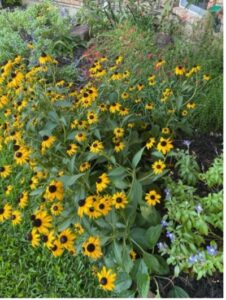
Madagascar Periwinkle (Catharanthus roseus)
The showy, sparkling flowers of Madagascar Periwinkle offer tropical color and charm to any summer garden. This easy-care plant produces a mound of glossy, green foliage topped with colorful blooms in shades of pink, rose, red, lavender, white, and even bicolored patterns. The flowers resemble small stars with a contrasting central “eye” and bloom from summer to frost. This heat-and-drought-tolerant plant thrives in scorching areas. Maintaining a compact, mounding height of 8-12 inches, Madagascar Periwinkle trails gracefully to deliver a splash of color to sunny borders, drought-prone areas, or pollinator gardens.
Periwinkle looks especially lovely cascading from the rims of patio containers, hanging baskets, or along the edges of a sunny garden pathway. While this plant requires minimal care, it is frost-tender and must be grown as a warm-season annual outside USDA hardiness zones 10-11. They prefer well-drained soil with a pH ranging between 7.4-7.8. Although tolerant of some afternoon shade, they perform best with six to eight hours of direct sunlight daily. Periwinkles are native to Madagascar, India, and the tropical regions of Asia. While they are poisonous to humans and pets, this beautiful plant attracts a variety of beneficial pollinators to the landscape.
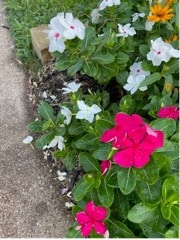
Pentas/ Egyptian Star Flower (Pentas lanceolata)
Commonly referred to as Star Cluster or Egyptian Star Flower, the tropical Pentas plant is named for the five-pointed shape of its flowers. Pentas charms the summer garden with jewel-toned flower clusters in white, pink, red, or lavender shades. The non-stop blooms appear from summer through fall and are a favorite of butterflies and hummingbirds. This plant must be grown as a warm-season annual north of USDA zone 10A, but it makes a lovely houseplant during winter. Pentas plants reach an average height and spread of 10-15 inches and need at least 4-6 hours of sunlight daily. Once established, Pentas is drought-tolerant but prefers moist, well-drained, slightly acidic soil. Even though Pentas thrives in areas that receive 6-8 hours of full sunlight daily, it will benefit from some afternoon shade in the harsh summer heat.
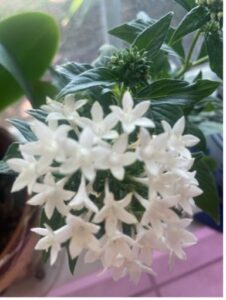
Cherry Sparkler Fountain Grass/ Crimson Fountaingrass (Pennisetum setaceum)
A beautiful hybrid of the Pennisetum family, Cherry Sparkler Fountain Grass is prized for its variegated foliage that displays a vivid combination of pink, burgundy, white, and green hues. Delicate pinkish-white plumes dance above the foliage from late summer through early fall, providing texture and movement reminiscent of fireworks. This ornamental grass has a clump-forming habit, making it an ideal selection for your summer garden borders, containers, or mass plantings. Cherry Sparkler is originally from the Middle East and loves well-draining soil and sunbaked conditions. It is resistant to drought and tolerates a range of soil types with adequate drainage. With its vibrant foliage and ornamental plumes, Cherry Sparkler Fountain Grass delivers drama and attracts butterflies to the garden with its blooms. This grass is perennial within USDA hardiness zones 9A-11B, which means it must be grown as an annual in cooler areas. Cherry Sparkler grows quickly to a height of 24-48 inches and provides a “thriller” factor to the summer garden from summer until frost.
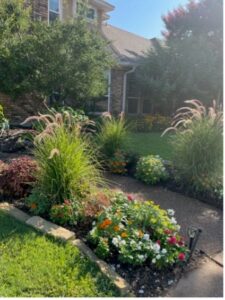
Four O’clock/ The Marvel of Peru (Mirabilis jalapa)
Four O’clocks add a delightful touch of old-fashioned charm to any summer garden. Named for their colorful trumpet-shaped blooms, the flowers open around four o’clock in the afternoon and bloom throughout the night. Because it is native to Peru, another common name for the Four O’clock is The Marvel of Peru. It grows into a shrub-like form with fragrant flowers in cheerful colors, including pink, red, magenta, yellow, or white. Occasionally, more than one color will appear on the same plant. Effortlessly grown from a scattering of small brown seeds, Four O’clock develops quickly into a beautiful ornamental plant with a heavenly night aroma. Remarkably low-maintenance, Four O’clock reaches a height and width of two or three feet. However, it readily self-seeds and spreads wider if left unchecked in the garden.
The Four O’clock plant prefers 4-6 hours of direct sunlight per day and evenly moist, slightly acidic, well-drained, loamy soil, although it will tolerate poor soil. It is winter-hardy to USDA hardiness zones 9A-11B. Four O’clocks will die to the ground in cooler zones after the first frost but typically return the following spring.
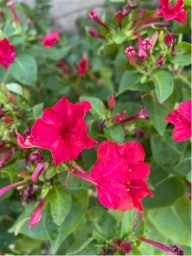
Firebush (Hamelia patens)
Firebush is prized for its brilliant red-orange blooms, irresistible to butterflies and hummingbirds. This fast-growing bright, colorful shrub offers vibrant green foliage topped with fiery tubular flowers. It typically maintains a height and spread of 4-5 feet but, in ideal conditions, may grow larger. A dwarf cultivar called Firefly has recently become available. Firebush is a tropical shrub that is great for summer gardens. It requires plenty of heat and at least 6-8 hours of full sunlight daily to flourish. Native to the Southern United States and South America, it grows best within USDA hardiness zones 8A-11B. Firebush is drought-tolerant but does require excellent drainage.
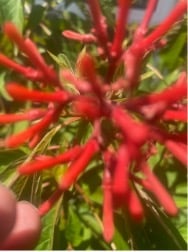
Moss Rose (Portulaca grandiflora)
Moss Rose glows throughout the summer heat without batting an eye! This beautiful succulent is excellent for summer gardening as it trails along the ground to form a jewel-toned mat of rose-like flowers above moss-like, succulent foliage. Moss Rose features one-to-three-inch blooms and is available in rainbow hues ranging from orange, pink, fuchsia, magenta, peach red, salmon, white, gold, purple, or lavender. The spectacular flowers close their petals at night or during dark cloudy days and open in the morning light. Typically grown as a summer annual, Moss Rose is frost tender and remains evergreen through the winter only within USDA zones 9-11. This low-growing plant reaches a height of 4-6 inches and makes a lovely trailing accent for hanging baskets, rock gardens, or the front of sunny borders. Plant Moss Rose in full sun and slightly acidic, loamy soil for endless summer blooms.
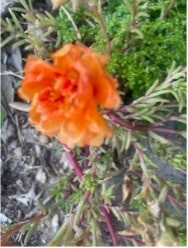
Summer Gardening with PlantTAGG
If you’re not sure what plants will work in your summer garden, let PlantTAGG help! Easily find plants and flowers that will work in your space with PlantTAGG’s Suggest A Plant feature. Watch this video to learn how it works.
PlantTAGG is always free to download and use — get it today in the Google and Apple app stores and remove the guesswork from your gardening!


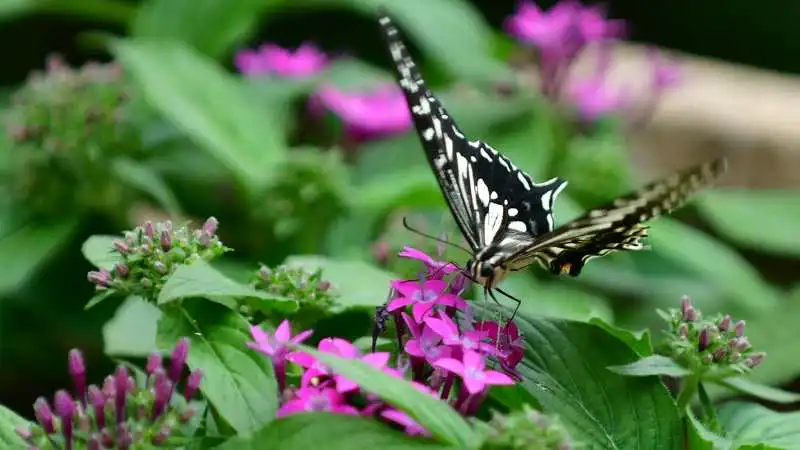
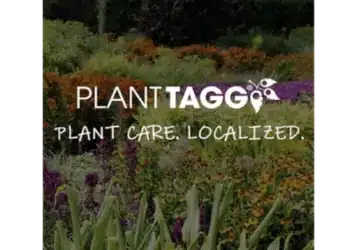
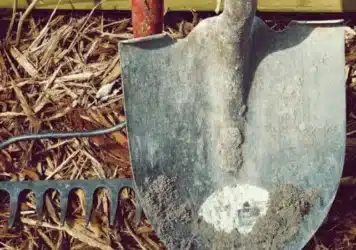
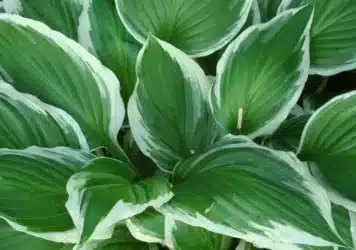
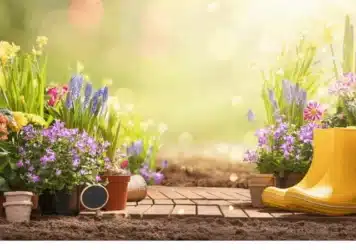
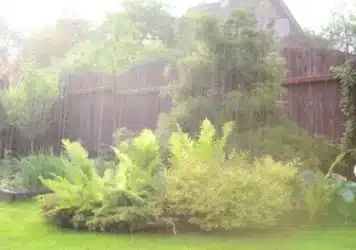


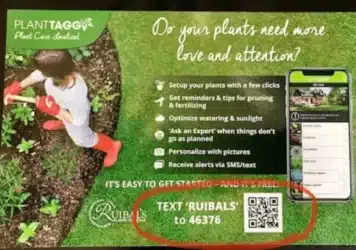
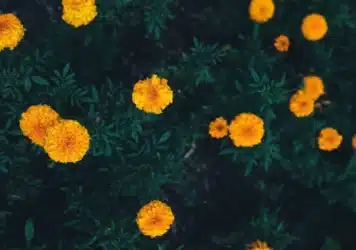

Comments (4)
This article is very charming.I love gardening and this is very useful for me.Thank you.
Black eyed susan is my top favorite flower. It decorates my entrance towards my house gate. It is short and easy to maintain. Next comes the Victoria blue flower which give a pleasant and aesthetic look to the whole place. I love that vibrant color.
Fantastic list of summer plants! Zinnias and sunflowers are personal favorites. Perfect for brightening up any garden.
What a great tip on companion planting! I’m going to try marigolds around my peppers this year.